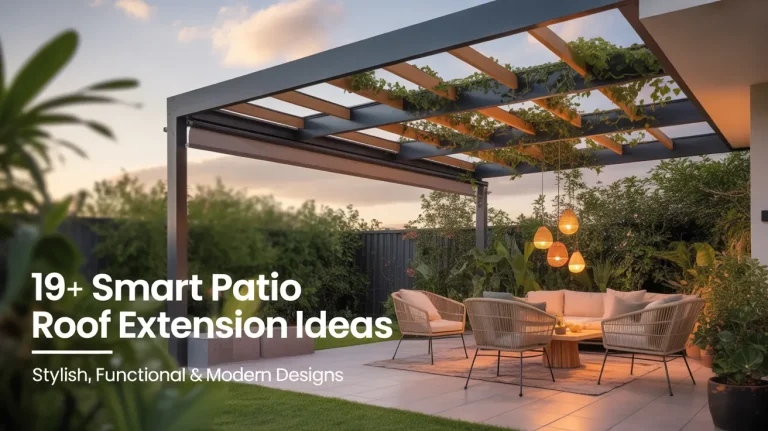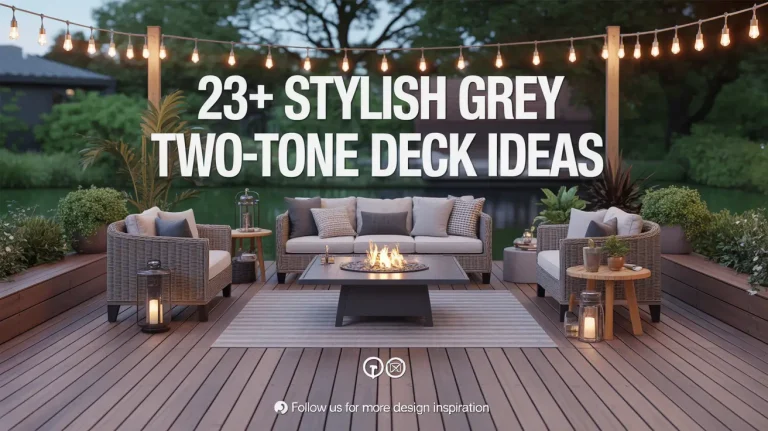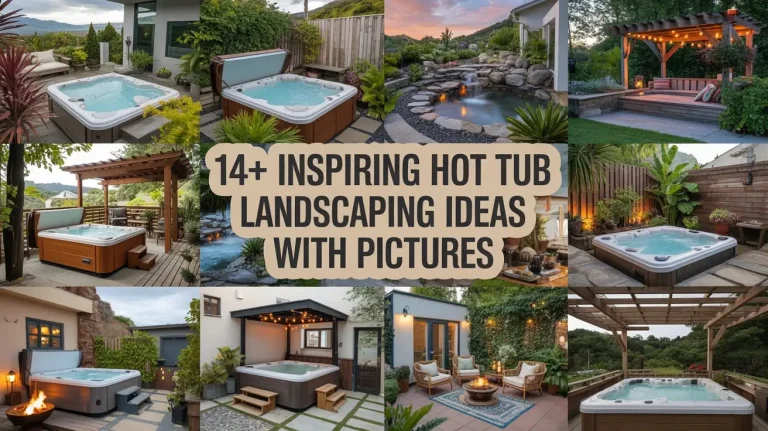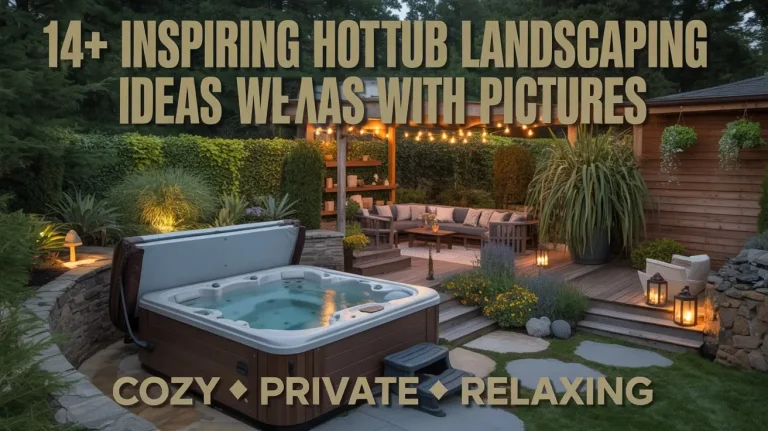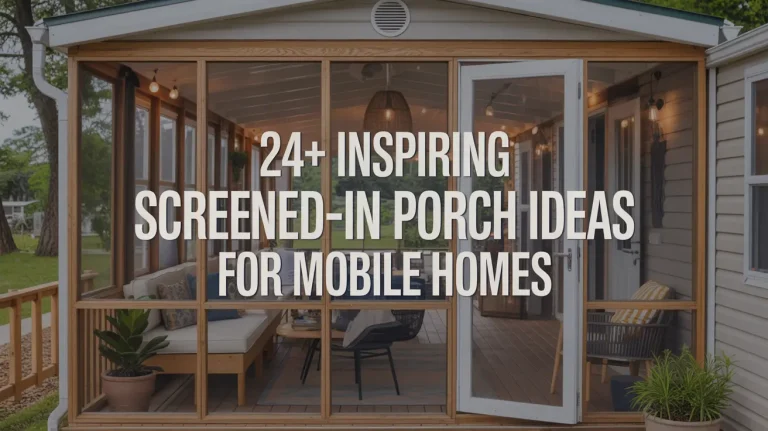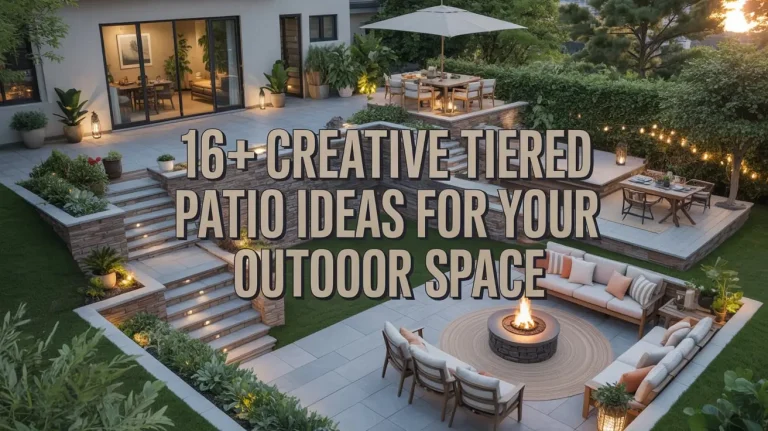23+ Smart Deck Shade Ideas for Windy Areas
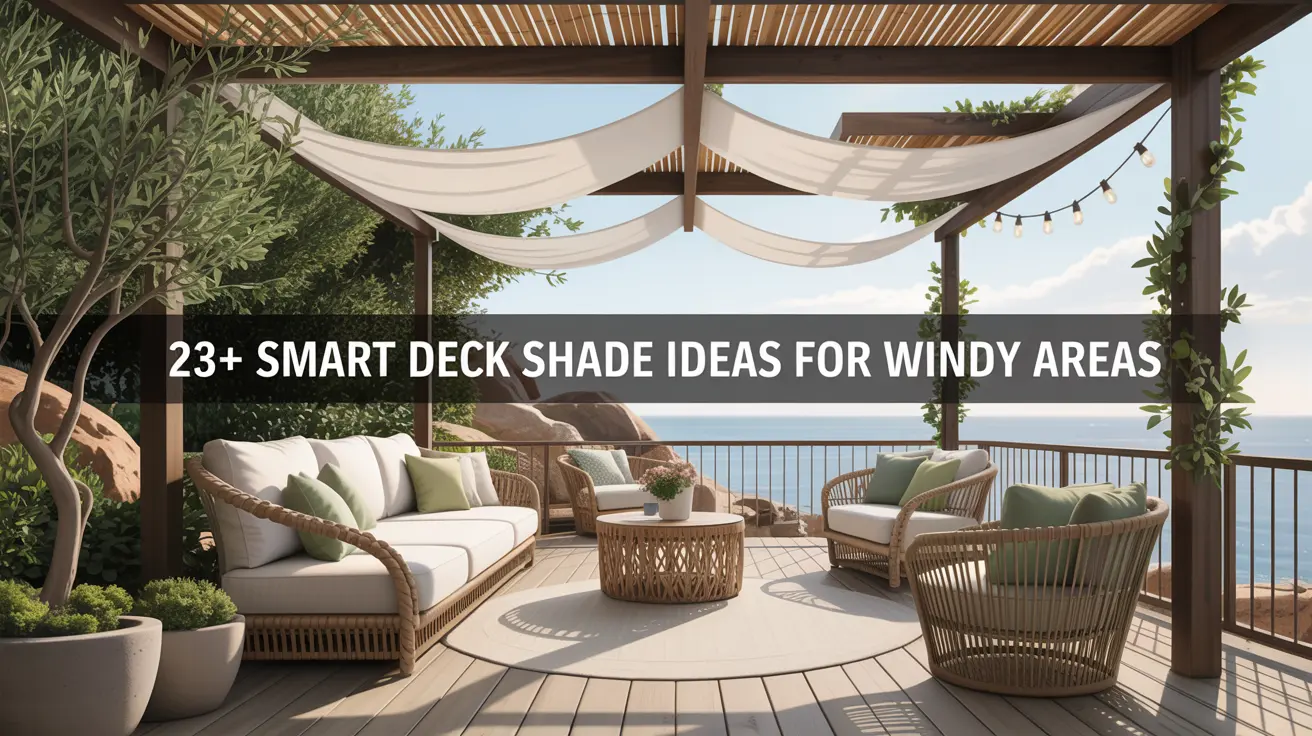
Why Shade Solutions Matter for Windy Decks

Decks are made for comfort—but when strong winds sweep through, even the coziest setup can feel chaotic. That’s why choosing the right shade for a windy area is more than a design choice—it’s a smart solution for safety, stability, and year-round use. The best shade ideas not only block sun but also stand firm when the wind picks up.
This article features 23+ wind-friendly deck shade ideas that balance beauty and practicality, helping you enjoy your outdoor space even on breezy days. Whether you’re planning a total makeover or a simple weekend upgrade, these ideas will guide you toward the perfect setup.
1. Pergolas with Reinforced Beams

A pergola offers structure and shade—but for windy spots, use pressure-treated wood or metal beams and anchor the posts deep into the ground. Reinforce the joints with hurricane brackets or steel connectors to increase stability. Consider adding cross beams to reduce sway and support climbing plants like ivy that can further anchor the structure.
2. Louvered Roof Systems

These adjustable shades are ideal for controlling both light and airflow. In windy weather, you can tilt the louvers to allow wind to pass through while still blocking harsh sun. Look for motorized or manual options built with sturdy aluminum. Some systems come with wind sensors that auto-adjust during storms.
3. Heavy-Duty Umbrellas with Weighted Bases

These umbrellas are designed for functionality in challenging conditions. Choose models with vented tops that allow wind to pass through, reducing uplift. Bases made of concrete or steel provide excellent support. UV-resistant fabrics help the umbrella last longer, and crank mechanisms offer ease of use. Some advanced versions come with locking levers and collapsible poles for secure storage.
4. Tensioned Shade Sails

Triangular or rectangular shade sails with tensioned corners are made to handle strong breezes. Choose high-density polyethylene fabric and stainless-steel anchors for best durability. Install at steep angles and tension all sides evenly. For added reinforcement, install to sturdy posts set in concrete and avoid fixing to structures that may shift.
5. Retractable Awnings with Wind Sensors

These smart systems automatically retract when wind speeds become too strong. They are perfect for those who want flexibility without sacrificing safety. Opt for awnings rated for wind resistance and equipped with durable motors and sensors. When retracted, they stay hidden and protected from debris.
6. Slatted Wood Roofs

Slatted wood roofs are both stylish and effective in windy areas. Space the slats to allow airflow while blocking harsh sun. Use weather-treated lumber like cedar or redwood for strength and longevity. Painting or staining adds extra protection and allows you to match your deck’s theme. Reinforce the structure with galvanized hardware.
7. Outdoor Curtains with Bottom Weights

Hang weather-resistant curtains from rods or pergolas, and sew in weights or use curtain clips at the bottom to keep them grounded. These add instant elegance and soft shade while reducing wind flapping. Consider double layering for added protection and adjust them easily to block or allow breeze.
8. Corrugated Metal Roof Panels

For a more permanent solution, install corrugated metal over a pergola frame. It’s wind-tough, waterproof, and can handle years of weather. Choose muted tones or modern blacks for a stylish finish. Seal the seams and edges to prevent leaks and consider noise-dampening pads underneath for quiet during storms.
9. Tiki-Style Thatched Roofs

Natural thatch gives a breezy, tropical look—and it’s surprisingly wind-resistant when securely fastened to a pergola frame. Use fire-retardant and weather-treated thatching. Tiki designs are best for beachy or coastal decks and can be blended with palm planters for a seamless resort feel.
10. Fixed Polycarbonate Roof Panels

These transparent or tinted plastic sheets offer UV protection and resist strong gusts. Ideal for adding year-round coverage while letting in natural light. Multiwall polycarbonate is especially good for insulation and impact resistance. Choose a sloped design for proper drainage.
11. Shade Canopies with Steel Frames

Freestanding canopies with steel or aluminum frames are more wind-resistant than flimsy fabric versions. Select models with reinforced legs, thick canopy fabric, and secure ground anchors. A dual-vent roof allows wind to escape, minimizing uplift risk.
12. Wind-Resistant Gazebos

Some gazebos are built specifically for breezy areas, using steel frames, vented roofs, and reinforced joints. Look for designs with tensioned roof supports and double-layer covers. Optional sidewalls and netting add both privacy and additional wind shielding.
13. Rolling Outdoor Shades

Install rolling screens on one or more sides of your deck. These act as windbreaks while also providing shade. Choose high-tension fabric and aluminum housings for durability. Manual or motorized versions can be retracted during storms, preserving their integrity.
14. Canvas Shade Panels with Grommets

These are ideal for a DIY or semi-permanent setup. Install grommets every few feet for even tension and secure with rope or bungee cords. Marine-grade canvas ensures long-lasting durability. Mix canvas colors to create a stylish look that blends with your home’s exterior.
15. Plant-Based Windbreak Walls

Hedges, bamboo, or tall grasses planted strategically can block wind and create partial shade. Choose evergreens for year-round coverage or ornamental grasses for soft movement. Use planters with wheels if you want the flexibility to reposition them.
16. Steel Cable Shade Systems

Use steel cables to create a tensioned system where you can hang lightweight fabric that resists flapping. This system is sleek and modern, perfect for minimalist or contemporary deck designs. It’s also great for renters since it’s removable without permanent construction.
17. Arched Steel Structures

Curved metal shade frames offer wind-cutting angles and strong stability. Cover with UV-resistant fabric that allows airflow while casting gentle shade. These can double as decorative arches with lights or climbing plants for added appeal.
18. Overhead Trellis with Climbing Vines

Install an overhead wooden trellis and plant fast-growing vines like grape, wisteria, or jasmine. The foliage provides filtered shade and doesn’t act like a wind sail. Vines add color, texture, and fragrance to the area, creating a sensory experience.
19. Hardtop Aluminum Canopies

These gazebo-style roofs with fixed aluminum panels offer solid coverage and weather resistance. Choose powder-coated versions for long-lasting beauty. They often include integrated gutters and drainage to handle rain and wind together.
20. Fabric Panels on Tension Rods

Stretch UV-resistant fabric between heavy-duty rods mounted on deck rails or posts. This option is flexible, quick to install, and easy to remove. Best of all, it provides partial coverage while allowing wind to pass through, reducing pressure on the system.
21. Modular Deck Covers

Prefabricated roof modules made of metal or plastic can be bolted onto your deck frame. These systems are often customizable and come with built-in gutter systems and snow load resistance, making them ideal for all-season use.
22. Glass or Acrylic Wind Walls

Install partial transparent windbreaks to shield your deck from gusts while keeping views open. Combine with overhead shade for a balanced solution. Glass wind walls can double as safety rails and are easy to clean with water and mild soap.
23. Sailcloth Drapes with Anchor Points

Use thick sailcloth panels attached to carabiners and secured to deck posts. Add ground anchors to hold everything tight in high winds. Sailcloth has nautical charm and can be customized in color and cut to match your deck’s aesthetic.

